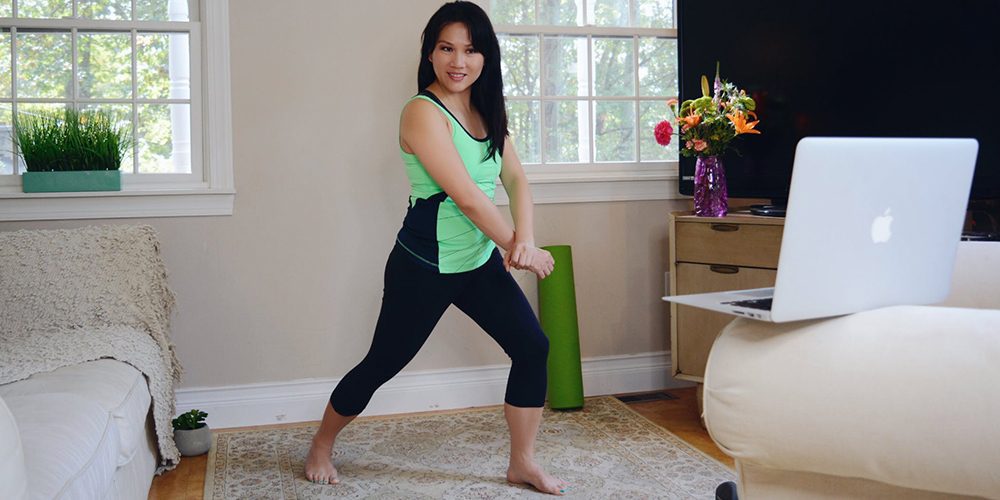Breathing is easy. Well, that is until our bodies need more oxygen because of increased workload. When you’re working out, exercising, cycling or running, breathing is as important as the workout itself. Breathing deeply and quickly helps you to get oxygen into your muscles and keep them functioning properly-which in turn will help you to perform better. Read on for some tips on how to breathe while working out!
Why is it important to concentrate on breathing while exercising?
When you’re exercising, your body generates heat and needs to release it. The best way to let the heat out is by sweating-and the best way to sweat is by breathing quickly. If your breathing doesn’t get enough oxygen into your blood vessels, then you won’t be able to lose excess heat effectively. Oxygen, as well as food, also needs to get into the muscles that are working. If you fail to breathe properly during a workout, your blood won’t be able to support muscles that may need it.
Through concentration on your breathing, you will be able to exercise more deeply and efficiently.
How do I breathe properly?
Proper breathing is deep and quick. You also want to make sure that your inhales are through the nose and exhaling through the mouth.
When breathing in, you want to breathe from your abdomen and not fill up your lungs with air. Breathing from the belly will draw fresh oxygen down into the blood vessels. You don’t necessarily need to suck in your stomach or pull your chest up, but simply fill yourself up by expanding your diaphragm and letting it push out.
How can I improve my breathing for workouts?
If you’re not already doing so, start practicing deep and fast breathing before and after workouts. Breathing exercises may help you to get into a rhythm which will work better with your body’s natural flow. If you’re having trouble improving your breathing, there are also many books and guides available that can teach you how to breathe deeply and quickly-including specialized books written for yoga or weightlifting!
Be sure to continue learning about breathing and the ways in which it can help you improve your workout!
As always, get out there and exercise! Whether you’re running, cycling or lifting weights in the gym, make sure to keep breathing deep and quick. You may also want to check out our Beginners Guide To Fitness for some more advice on how to begin working out.
How should you breathe when running and exercising?
Breathing is important in any exercise or sport. But when you’re running the demand for oxygen increases dramatically and breathing gets more difficult. During intense or long-lasting effort, your muscles require a large amount of energy, which can only be produced through anaerobic (without oxygen) metabolism. At this point, it’s essential that you breathe deeper and faster.
Should I breathe through my nose or mouth when exercising?
Breathing through the nose while running or exercising is always recommended, as it improves air intake and oxygen delivery to your cardiovascular system. Breathe deep into your lungs and imagine you are trying to inflate a beach ball within your chest cavity. To prevent hyperventilation, breathe from the belly and not from the chest.
What are some methods for breathing while exercising?
Breathing during any kind of exercise is very important to ensure your body has enough oxygen being delivered to your muscles. When you’re working out, try a few different techniques like breathing in through your nose and out through mouth or even try inhaling once and exhaling twice. You can also try breathing in through your nose for 3 steps and then breathe out of your mouth for 3 steps.
Why do I get short of breath when exercising?
If you’re feeling short of breath, then your body is telling you that you need more oxygen. This usually occurs because there’s not enough air flow into your lungs or because the muscles are working too hard and demanding more energy than what is currently available.
What are some tips to get better at breathing?
When you feel short of breath or experience an elevated heart rate when exercising, it’s time to relax and focus on your breath. You need to control your breathing in order for it to work as fuel for your muscles. Consciously slow down your breathing. On the inhale, try slowing down your breathing by a count of 5 seconds. On the exhale, try slowing it down over a count of 7-10 seconds. You should do this until you are able to get control of your body and your heart rate decreases.
What are the 4 types of breathing techniques?
There are several breathing techniques that you can use to help improve your athletic performance. One of the most popular is pursed lip breathing, which involves taking quick breaths through the lips while they’re pursed together. Another is square or box breathing, which involves inhaling for 4 seconds, holding for 4 seconds and exhaling for 4 seconds for a total of 4 sets. A third breathing technique is diaphragmatic breathing, which involves inhaling through your nose to a count of five and exhaling through pursed lips for a count of 5. The fourth is called belly or abdominal breathing, which involves taking deep breaths from your belly instead of your chest.
What are the benefits of proper breathing during exercise?
There are many benefits of proper breathing during exercise. One benefit is that you will have better lung function which can lead to improved athletic performance and anything you do requiring endurance. When you’re exercising, your muscles require more oxygen than normal and when breathing techniques are not used properly it can reduce the amount of oxygen in the blood and the muscles may not get the fuel they need to work properly.
What are some exercises that require proper breathing?
Some exercise examples that require proper breathing techniques would be when running, cycling, swimming, step aerobics or virtually any other cardiovascular workout. Use your breath as a tool to help you move forward and push yourself further in your workouts.
What is the 4-7-8 breathing technique?
The 4-7-8 breathing technique is one of the most simple and easiest techniques for stress relief. To do this exercise, simply inhale through your nose for a count of four, hold your breath for a count of seven, and exhale completely through your mouth until you have completely emptied your lungs for a count of eight. Repeat this cycle three times to get the maximum benefit from your breathing technique.
What are some helpful tips for breathing before and after a workout?
Before your workout, you should try to relax and clear your mind. Breathing techniques can help you do this as well. You should start off by taking slow deep breaths so that oxygen is sent throughout the body. Once you begin exercising, try not to hold your breath. The point of having proper breathing technique is so that your muscles have enough oxygen throughout the workout. And after a workout, make sure you take some time to cool down and relax again by doing some breathing techniques.
When exercising, it is important to control your breathing. Breathing helps muscles get the oxygen they need and should be focused on in order for them to work properly. Proper breathing techniques can help you perform better during exercise because the more oxygen that is available to your body, the easier it will be for you to push yourself further. There are many benefits of proper breathing while working out but one key takeaway we want you to know about is how deep breaths before a workout can reduce stress levels as well as improve lung function which leads directly into improved athletic performance or anything requiring endurance. In addition, after workouts make sure not hold your breath when having proper technique so that blood has enough oxygen throughout the entire process-improving energy levels post-workout!
























